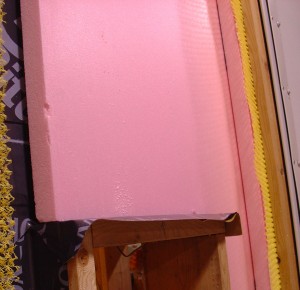That’s what an energy model will tell you.
How much insulation to use is one of the most common questions in the construction industry–among both contractors and homeowners. A steady increase in energy prices, along with growing material costs, makes it important to find the sweet spot between energy efficiency and affordability.
The Alaska Housing Finance Corporation provides standards, called Building Energy Efficiency Standards, or BEES, for different regions of Alaska to help guide these decisions. Home builders using AHFC mortgage loans must comply with these standards, but they also provide a good reference for anyone building in Alaska.
An energy model will tell you if you meet these standards. It’s a computer modeling program that runs a series of heat-loss and performance calculations for every single component of your house. You plug in the dimensions and construction details of all the exterior walls, roof, windows, foundation and floor, along with info about your heating and electrical systems, and you end up with a model of your home’s performance. The program also factors in climate data. You can change insulation values, construction types, heating appliances, and fuel prices to test a variety of conditions.
The best time to do the modeling is before you build, as it gives you the most flexibility to make changes. The best approach is to hire a state-certified energy rater to plug your house plans into the program, which should run between $350-$700 (but probably toward the lower end). You are required to get an energy rating anyway if you are using an AHFC funded mortgage loan to make sure you meet their standards. If you want to try energy modeling yourself, you can download a public copy of the AK Warm modeling program here (the one used in the state of Alaska).
Energy modeling is a powerful tool that can provide long-term savings and peace of mind with minimal up-front investment. Remember, though, that occupant behavior and awareness will also have a great impact on your home’s performance. A house bursting at the seams with teenagers will perform differently than the same one occupied by a retired couple.
